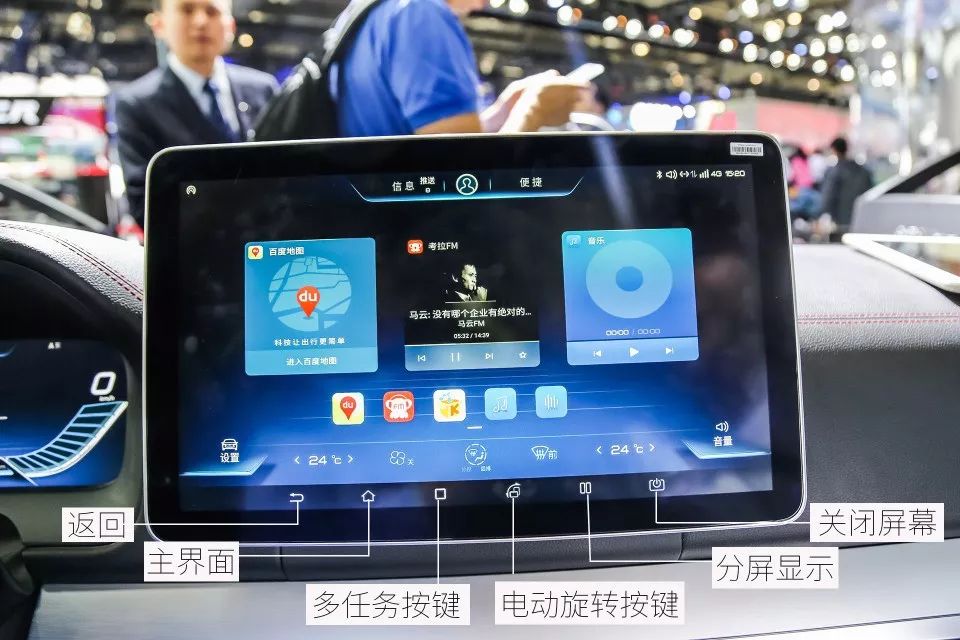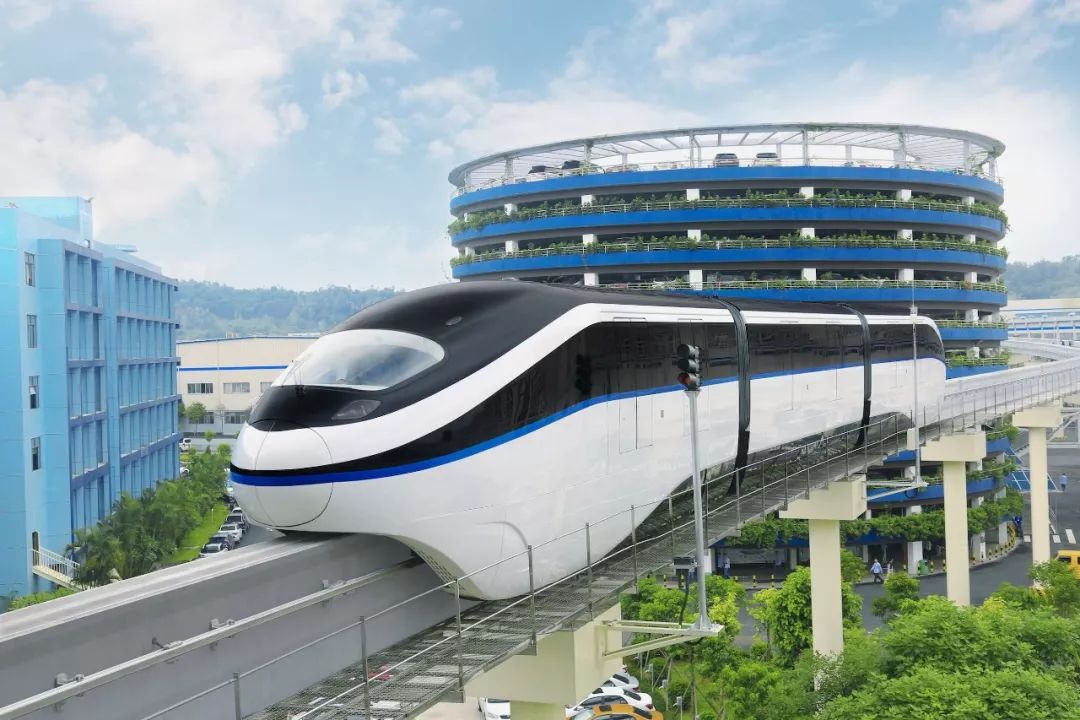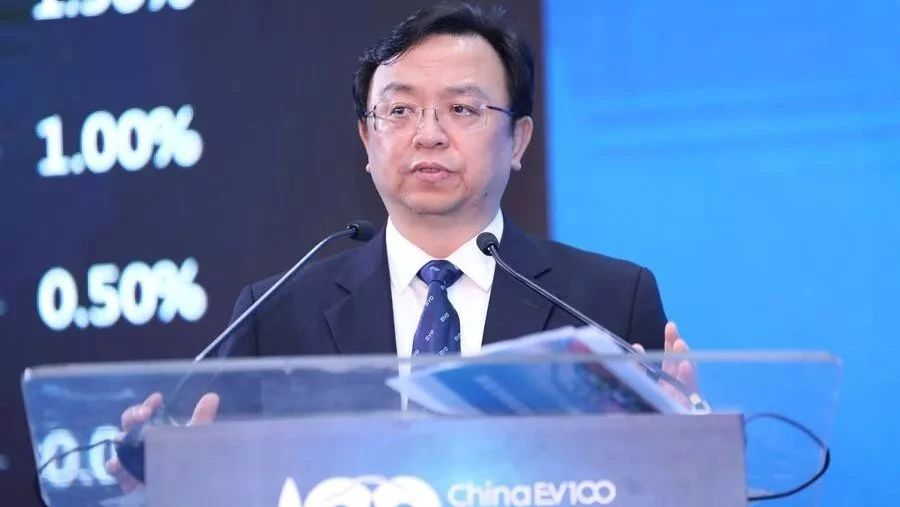On June 20th, the Global Intelligent Automotive Frontier Summit, hosted by China EV One Hundred People’s Congress, was held in Shenzhen. Wang Chuanfu, Chairman of BYD, attended the summit and made a speech.
Here are the key points of Wang Chuanfu’s speech:
-
China’s electrification of the automotive industry is at the forefront of the world, which is closely related to the strong support of the Chinese government.
-
Based on the development of electric vehicles, BYD will vigorously promote the intelligent research of cars. Therefore, BYD will develop an intelligent electric vehicle platform architecture, open all control rights and communication protocols and develop an open intelligent automotive ecosystem.
-
In the above platform, BYD will play a role in defining hardware standards and put efforts on the soft and hard redundancy space for vehicle safety and autonomous driving.
-
Wang Chuanfu believes that the 3.0 version of future public transportation should be automated, intelligent, and three-dimensional, including pure electric buses and cloud rails that have achieved highly autonomous driving.
The following is the full text of the speech:
Distinguished leaders and friends, good afternoon! It is a great pleasure to attend the “Global Intelligent Automotive Frontier Summit” today. My topic today is “Electrification promotes the intelligent development of cars”.
Electrification of cars has become a trend. Eight years ago, people were still questioning and doubting, when our first intelligent bus was put on the road in Shenzhen, there were still doubts. Today it can be said that electrification is the trend of cars. Of course, it also lays a solid foundation for intelligence. Just like the abacus and computer, the abacus cannot generate the Internet, while the computer can generate the Internet. Similarly, our traditional mechanical cars can only be used as a means of transportation. They cannot produce intelligence, while electric cars rely on electricity to drive and motors, electrical control, etc. to produce the foundation of intelligent cars. Therefore, we believe that the electrification of cars is the real intelligence, which lays a solid foundation. Building an intelligent ecological cooperation platform is also a driving force for the open development of intelligent automobiles and the intelligent industry is also looking to the future.
China has made strides in the development of electric vehicles in recent years, and last year, our country’s output of new energy vehicles reached 770,000, accounting for half of the world’s total, which may double this year. Particularly in some areas, such as Shenzhen, public transportation and buses have already been electrified, and by the end of this year, taxis in Shenzhen will also be fully electrified. Furthermore, the Shenzhen government is forward-looking, in May of this year, we announced that logistics trucks cannot be registered or put on the road unless they are electric vehicles. As a new energy industry, we especially welcome such policies, which are better than any policy such as “double integral scores” or subsidies. This is a characteristic of China, and it is time to further promote the development of new energy vehicles and not allow fuel cars on the road, to register or to obtain license plates.# Global Situation
Nowadays, various countries are developing their own timetables to ban the production and sales of fuel vehicles, as you could see from the image before. For instance, France and the UK plan to achieve the goal in 2040, while the Netherlands aims to achieve it in 2025. We believe that China’s Ministry of Industry and Information Technology (MIIT) is already studying, discussing, and developing the countdown timetable for fuel vehicles in China. Furthermore, we also believe that China’s development is orderly and separated by different sectors, and that the electrification in the public transportation sector will be the first to be achieved. After that, the electrification in the field of taxis, logistics, or trucks will follow, and finally, the comprehensive electrification in the private car sector will be implemented.
Increase in New Energy Vehicles
As we just saw from the data, the proportion of new energy vehicles in China is increasing year by year and has reached a turning point. We believe that if we have 1.5 million new energy cars in China this year, the proportion of cars in China will reach 5% to 6%, thanks to the government’s efforts to protect the environment and ecology, especially to enhance its treatment of the environment. We foresee that this trend will become even more apparent in the future.
BYD – A Leader in New Energy Vehicles
BYD is one of the pioneers and leaders in the production of electric vehicles, and has gained some advantages and a foundation in this field. Based on that, we have developed an open smart ecosystem called “DiLink” to meet the needs of the electric vehicle era.

Smart Phone – A Model for Ecosystems
We can imagine that the development of the automobile industry will be similar to the evolution of smartphones. The difference of functionality between a feature phone and a smartphone creates a demarcation. A feature phone can make phone calls, while a smartphone – or what we call a Smart Phone – can do much more. It can link with mobile payment systems, order cars through ride-hail platforms, or even have meals delivered to our offices. This kind of ecosystem has had an enormous impact on our lives and has been a huge driver for human civilization, just like smartphones.The same, we have moved from mechanical cars to electronic cars, to a larger space, more screens, and more complex software systems. We call it intelligent cars, what will it bring to our lives? Some people say autonomous driving, but that’s just one of them. Just like making calls on our phones, it’s just one thing our phones can do. Similarly, besides driving, what else can our cars do? Think about it, there’s nothing impossible. BYD has developed a DiLink system which includes 341 sensors and 66 control rights, including the control of driving, braking, steering, doors, windows, air conditioning, and many other functions. There are more sensors available; a smartphone only has up to 13 sensors, but it can produce 17 million apps by using 13 sensors or internet technology. Many internet giants, like Tencent, Alibaba, have been produced by this technology without building a smartphone. They used the mobile platform as a foundation for innovation, creating a variety of applications, making our lives better on mobile devices.
BYD also wants to build an open platform, system, and ecosystem based on intelligent cars, allowing elites from around the world to participate. Similarly, we have reserved many positions in our cars, and defined ourselves as a standard intelligent car supplier. We cooperate with global elites and open all sensor control rights and communication protocols. We are willing to open some control rights to various innovations and industries so that they can join the automobile and electric vehicle platform. Only through this openness can true prosperity and innovation truly flourish.
In fact, there is a classic case in the mobile phone industry, Nokia. At its height, we supplied it with nearly 1/3 of the mobile phones, and its market share peaked at 42%. It’s hard to find a company with such a high market share in a consumer product these days. However, it has fallen with the changing times. Did it lose in product quality? I think Nokia’s quality is still very good. Was it due to poor management? Nokia’s global management and delivery were excellent. It was due to its closed approach.We believe that cars must be open, rather than saying that they are unsafe as soon as they are open. For example, banks are also open, and our online banking is all on the Internet. Is it not safe? Will money be stolen? That is an excuse. Our hardware and software can achieve absolute security. Therefore, BYD is the first in the world to open all systems and protocols. We define a standardized hardware platform that can generate various applications, including unmanned driving. As Professor Yu mentioned just now, we are responsible for execution of environment perception and calculating decisions, but we reserve space. Many corners of the car have been reserved for your sensing system. We install standardized power supply, cooling system, or high-speed internet module to allow your computer, algorithm, and machine to communicate at high speed and maintain stable heat dissipation. This car will be launched in September of this year, the BYD Qin Pro, and we will also hold a global developers’ conference. We want to build a completely open and highly intelligent platform. We welcome all sectors of society to work with us to make intelligent cars contribute to social civilization as today’s smartphones have done.
The new BYD Tang will be launched on June 22, with some features including a rotating large screen. As we all know, 70% of software in the mobile phone ecosystem is vertical and does not support horizontal software. Therefore, we have developed an automatic rotation function that automatically rotates vertical software into vertical and horizontal software into horizontal. It is a very intelligent and open car that looks good. We have expanded many reserved spaces and added many protocols. Of course, we have also done banking-level and financial-level security architecture.
In terms of smart ecology, we hope that one day we can proudly say that our cars are like today’s smartphones, bringing many collaborators, various capital, elites, wisdom, and innovative integration. In fact, automobile manufacturing is just like several mobile phone manufacturers. We provide you with a stable platform to enable cars to create greater value.
 Of course, specifically speaking, now buses have been fully electrified and city smart transportation system has been built based on buses. I think this is the most reliable way. In fact, BYD is already working on intelligent driving. The cloud rail and cloud bus are intelligent driving vehicles. I even rode on an automatic-driven cloud bus today. Every day, our factories have several lines across the country. There is a line in Yinchuan, which opened on September 1st last year and has been in operation every day. This is a highly automated driving system. Cloud travel lies in the independent road authority, which relatively avoids many legal issues. Because the ground is too congested and the underground subway is too expensive, we can only go up high, thus we have built a cloud rail and cloud bus system. We believe that Shenzhen will also build such a system in the future. The electrification of Shenzhen public transportation 2.0 version has been achieved. I believe that the future version 3.0 of public transportation should be automated, intelligent, and integrated in order to truly solve the congestion in our cities.
Of course, specifically speaking, now buses have been fully electrified and city smart transportation system has been built based on buses. I think this is the most reliable way. In fact, BYD is already working on intelligent driving. The cloud rail and cloud bus are intelligent driving vehicles. I even rode on an automatic-driven cloud bus today. Every day, our factories have several lines across the country. There is a line in Yinchuan, which opened on September 1st last year and has been in operation every day. This is a highly automated driving system. Cloud travel lies in the independent road authority, which relatively avoids many legal issues. Because the ground is too congested and the underground subway is too expensive, we can only go up high, thus we have built a cloud rail and cloud bus system. We believe that Shenzhen will also build such a system in the future. The electrification of Shenzhen public transportation 2.0 version has been achieved. I believe that the future version 3.0 of public transportation should be automated, intelligent, and integrated in order to truly solve the congestion in our cities.
On January 10th this year, we jointly released the cloud rail unmanned driving system with Huawei, which is currently running very well. We also thank our partner Huawei for their strong support.
Finally, the suggestion: electrification of buses and logistics vehicles, the industrialization of intelligent cars will be forthcoming in the future. Therefore, how to plan, design, and produce based on these new business models and industries will be an opportunity, and cities will also launch pilots. Shenzhen has always been at the forefront of various innovations. Shenzhen will also build a complete industrial support system in the new fields of automobile manufacturing, information technology, and transportation services, seizing the bridgehead of intelligent automobile development, establishing an industrial ecosystem, creating a model of “smart cities”.


- Toyota’s Future Move (2): Mobility-as-a-Service* 9.0 Cross-version Update is Coming, Let’s Take a Look at Tesla Autopilot

This article is a translation by ChatGPT of a Chinese report from 42HOW. If you have any questions about it, please email bd@42how.com.
